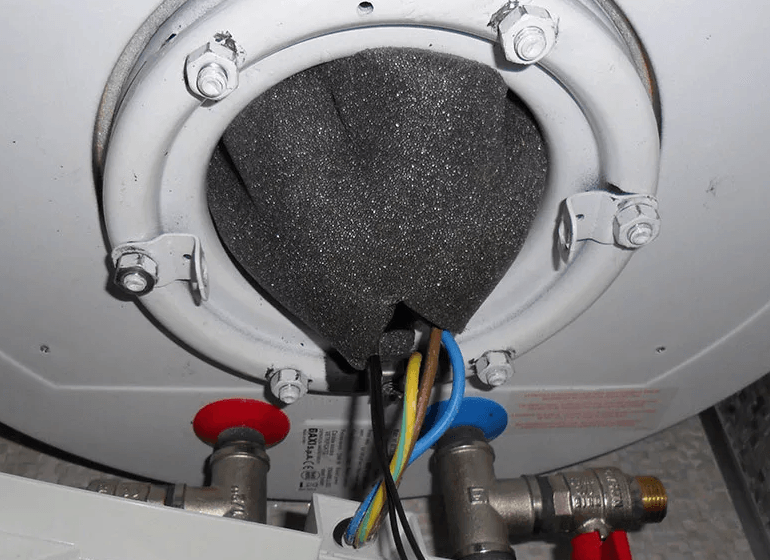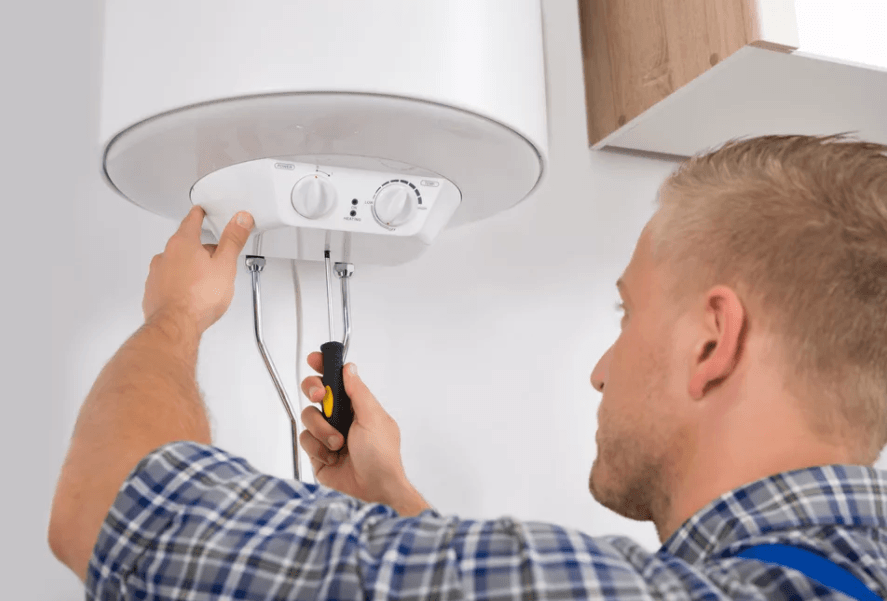You can see the boiler today in many apartments and private houses. They can become both an additional and the main source of hot water, as well as space heating. On sale you can see models operating on different energy sources - gas, electricity and others. But in any case, it is very important to know how to connect the boiler to the mains correctly.
Even minor installation errors can cause serious problems in the future - from equipment breakdown to fire and even gas explosion. Therefore, to know how the power supply to the water heater is connected will be useful to everyone who decides to purchase a boiler.
Content
Safety rules when connecting the boiler to the network

Apartment owners tend to prefer electric boilers. They are compact, safe and at the same time do an excellent job of their function. Therefore, we will take a closer look at the electric water heater.
When starting the connection, you need to follow certain safety precautions - as when working with any other electrical equipment.
First of all, you need to remember the following rules:
- Before starting work, turn off the electricity on the shield - this will eliminate the possibility of electric shock.
- All wires must be connected using soldering - this is a reliable and durable connection.
- Use only high-quality, reliable, fastening materials. An anchor hook with a diameter of 8 millimeters or larger is a good choice.
- In no case should you try to install the boiler on plasterboard walls - they obviously will not withstand an additional load of 100 kilograms or more.
Although the rules listed above are quite simple, many people, deciding to connect an electric boiler to the network, simply forget about them and subsequently face serious problems.
The boiler has to work in high humidity conditions, so it is extremely important to ensure that all wires are reliably insulated to avoid short circuits and equipment failure, or even fire.
Having prepared for further work, you can proceed directly to the installation.
Step-by-step instruction

All work on installing and connecting the boiler can be conditionally divided into several stages. We will describe each of them in detail so that even a person who does not have the relevant experience does not have difficulties in performing the work.
Mounting the water heater on the wall
On sale today you can see both storage and flow-through boilers. In general, their installation is quite similar, although with accumulative models it is associated with additional difficulties - primarily due to weight. Therefore, we will consider this particular option - it will be much easier to cope with a light storage water heater.
The work is done as follows:
- Mark the places on the wall where the boiler mounts will be located. To do this is simple - measure the distance between the "ears" on the water heater and transfer to the wall. It is better to use the level so that the "ears" are as horizontal as possible.
- Use a drill or punch to make deep enough holes in the wall.
- Drive dowels into them and screw in the anchor bolts. They must be long and thick enough to support a significant weight of the water heater - it can exceed a centner.

You should not worry about the finish - even if a small piece of plaster falls off during the drilling process, this section of the wall will still be hidden behind the boiler, so it will not be striking.
The slightest skew can cause the boiler to skew and, as a result, significantly reduce its service life. Therefore, the tank should be positioned as evenly as possible.
Having coped with this crucial stage, you can proceed to the next.
Connecting from an outlet
Before starting to connect the electric boiler to the network, you should figure out whether the selected equipment is suitable for this.
Don't forget that the water heater will most likely be installed in the bathroom. And here there is always high humidity. In addition, with a normal minor failure, water can enter the outlet, leading to a short circuit. Therefore, it makes sense to purchase a special outlet with protection against moisture.
Some experts recommend connecting the boiler directly to the panel without using an outlet. However, this is not always convenient. For example, cutting off the plug could void your warranty. So, if the boiler breaks down, you won't have to rely on warranty service.
Otherwise, there are no problems - the water heater simply plugs into the outlet, like a regular refrigerator, electric kettle or mobile phone charger. But it should be borne in mind - this option is usually suitable for not too powerful boilers.
Direct connection from the switchboard

There is another way to connect the boiler to the electrical network - directly from the panel. It is suitable when the power of the device is 3500 watts or more. The outlet will not withstand such a voltage, so you have to choose a more complex, but also reliable method.
To connect, you will need a large cross-section cable - it will be powered directly from the electrical panel. If the power of the device is in the range of 3.5-4 kW, then connecting the boiler to a single-phase network is suitable. If the boiler has a high power. You will have to connect to a three-phase network with a voltage of 380V, so take this fact into account when buying.
Don't forget about safety
The boiler is a powerful electrical device. Therefore, when working with him, in no case should you forget about safety. It is best to do this by connecting the boiler through an RCD - a residual current device.
Its main advantage is simplicity. Thanks to this, the RCD is not only very inexpensive, but also provides high reliability and durability. Outwardly, it looks like a small circuit breaker through which the cable in the electrical panel is connected. You need to choose it based on what power your water heater has.
The principle of operation is simple. Passing current through itself, the RCD measures it and compares it with the outgoing one. If a leak is detected, the circuit is automatically broken. Such a leak can occur for various reasons, but the most likely one is an electric shock to a person. It is the RCD that will cut off the electricity supply in a timely manner, saving a person's life.

Depending on the model, the RCD can react to different leaks - from 10 to 30 mA. It is better to choose a model with this figure of 10 mA. Yes, it can work falsely, especially if the boiler has been serving for several years. But it will prevent serious wounds and burns from electric shock. For clarity, we give a table showing how an electric shock affects a person:
- 5 mA - slight tingling sensation.
- 10 mA - muscle contractions, convulsions.
- 30 mA - burns, difficulty breathing.
- 80 mA - severe burns.
Experts recommend slightly reducing the comfort of use, significantly increasing the safety of using equipment.
The diagrams for connecting a water heater to an RCD are quite simple - the usual zero, phase and grounding. There are usually no problems here, especially if you pay attention to the color marking on the cable.
Diagram of connecting the boiler to the RCD

Useful Tips
A boiler is a pretty expensive thing. Therefore, every owner, having spent money, wants the water heater to work properly for many years even after the warranty expires. It will be helpful to provide some tips to help you extend the life of your device.
To begin with, it is advisable to use a special filter during installation. Most of the houses today are connected to fairly old plumbing. Therefore, fragments of rust and scale often get into the boiler, which can cause its failure. The filter, which costs only a few hundred rubles, eliminates the possibility of this.
If the water heater is installed in a house with old wiring, be sure to check its condition, or better immediately replace it with a new one. The old one can fail at any time - this will entail not only costly repairs, but also, possibly, cause a fire.
Under no circumstances should the boiler be placed directly above a flap or outlet. It should be to the side and below. Otherwise, the slightest leak can cause a short circuit and even shock a person.
Watch the video how to connect the boiler to electricity
Conclusion
Today we sorted out the most important points and gave useful recommendations. Now you know how to properly connect the boiler to electricity, which means that if necessary, you can easily cope with this task. The main thing is to carefully follow the instructions and act as carefully as possible. Then you won't have any problems.
Read also:
- How to descale a boiler (water heater) yourself at home
- The best boilers for home - rating
- How to get rid of the bad smell in the refrigerator



